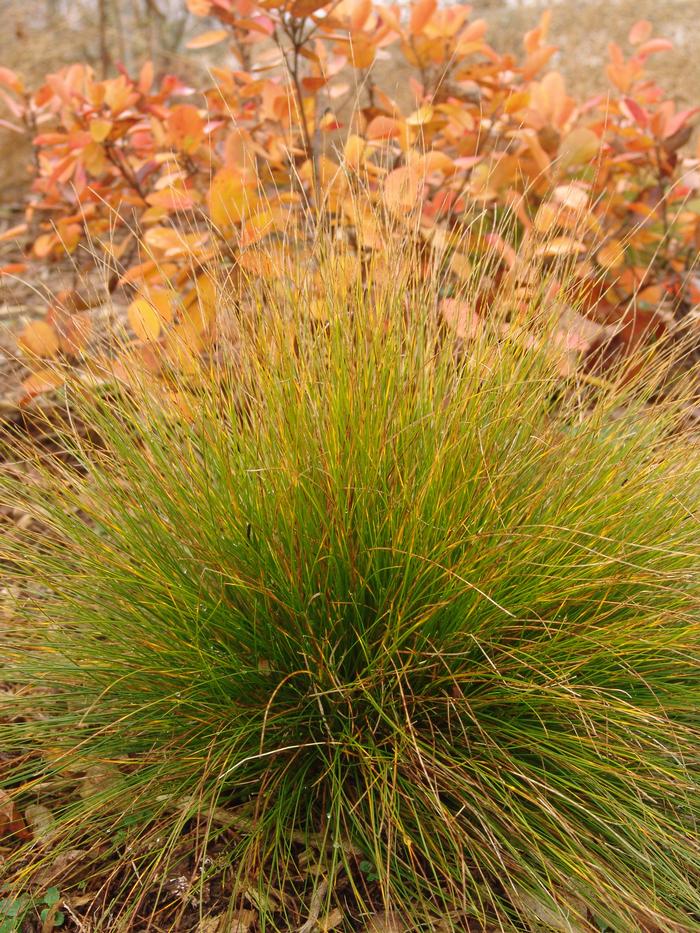General Description
Bloom Description: Blooms in May. Small yellow tufts held above the foliage.
Growth Habit & Shape: A short, clump-forming sedge that can slowly expand by rhizome in the right conditions.
Soil Preferences: Most often found in moist, alkaline (high pH) soils in New England. It is a common sight under cedars where it can grow into dense mats. However, can also be found in dry, sandy to gravelly sites.
Root Description: Fibrous
Garden Uses: Shade gardens, woodland gardens, rock gardens, limestone rock outcrops and ledges, slopes, and alternative lawns.
Best Management & Maintenance: Prefers site with light leaf litter.
Common Problems: No significant problems.
Benefits
Ornamental Value: This sedge's fine, dark foliage, regular, clumping form, and black seed capsules make it a great textural addition in gardens.
Wildlife Benefits: Many species of insects, including moths, butterflies, and bees use sedges as habitat or for food. Carex eburnea requires essentially no maintenance, so it can act as a refuge for insects that cannot handle frequent disturbance.
Other Practical/Environmental Benefits:
Use in place of: Non-native turf grasses.
Ecology
Habitat:
Can be found growing in high pH soils that are damp in spring but dry out in summer, particularly under Atlantic white cedars (Chamaecyparis thyoides). Also found in dry, sandy, and rocky soils.
Response to Disturbance: Takes a long time to recover from disturbance in drier sites since it is slower growing.
Native State Distributions:
Canada: AB, BC, MB, NB, NF, NS, NT, ON, QC, SK, YT
USA: AK, AL, AR, CT, GA, IA, IL, IN, KY, MA, MD, ME, MI, MN, MO, MT, NC, ND, NE, NH, NJ, NY, OH, PA, SC, SD, TN, TX, VA, VT, WA, WI, WV, WY
Wetland indicator status: FACU
Companion Plants:
Atlantic white cedar (Chamaecyparis thyoides), red columbine (Aquilegia canadensis), wintergreen (Gaultheria procumbens), Partridge-berry (Mitchella repens), wood ferns (Dryopteris spp.), broad-leaved sedge (Carex platyphylla), and pussytoes (Antennaria spp.).
References
Return to Top

